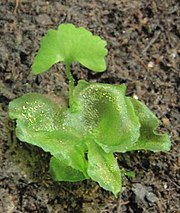It is one organism; the "facehugger" is just a complex first exoskeleton
I don't think alternation of generations is necessary to explain this, since the facehugger phase doesn't really behave much like an independent organism - it does not eat, grow, or mate with other facehuggers. It is simply a complex original exoskeleton that is discarded once it is no longer needed.
There are quite a number of parasitoids that have life cycles not entirely unlike the Xenomorph. Most of the time, the parent deposits the eggs close to the host if not injected directly through an ovipositor, or alternatively brings a host organism to the alreaminimizing the effort the larva needs to expend to pass to the host.
However, a more complex, independent injection mechanism could be justified if the host organism and the adult phase of the parasitoid are not active at the same time. Perhaps they evolved together, but the hosts stopped being active in certain seasons due to climate shifts, and the parent could not guarantee that it would be able to procure food for the eggs by hatching time. This would encourage the evolution of eggs that could outlast the parent and hatch on their own when exposed to a nearby host, and also provide an advantage to larvae that were better at burrowing into their hosts independently.
Perhaps they evolved as a more standard parasitoid, where the parent would provide the eggs with a paralyzed host but the larva would still need to burrow into the host on its own. It would only need the "burrowing" mechanisms in its first molt; once it had successfully implanted itself into the host it could shed these and begin its metamorphosis into its adult phase.
As the burrowing mechanisms became more sophisticated and the larva more independent, they could eventually develop sensory organs for pursuing a host and injecting themselves into its gut directly. Alternatively, the facehugger was similar in form to the original larva, and the second molt became less sophisticated in order to make it easier for the first molt to inject it into the host.
Note: This assumes that the Xenomorph evolved alongside its chosen host. An organism that can successfully parasitize a host from another planet is much less plausible.





